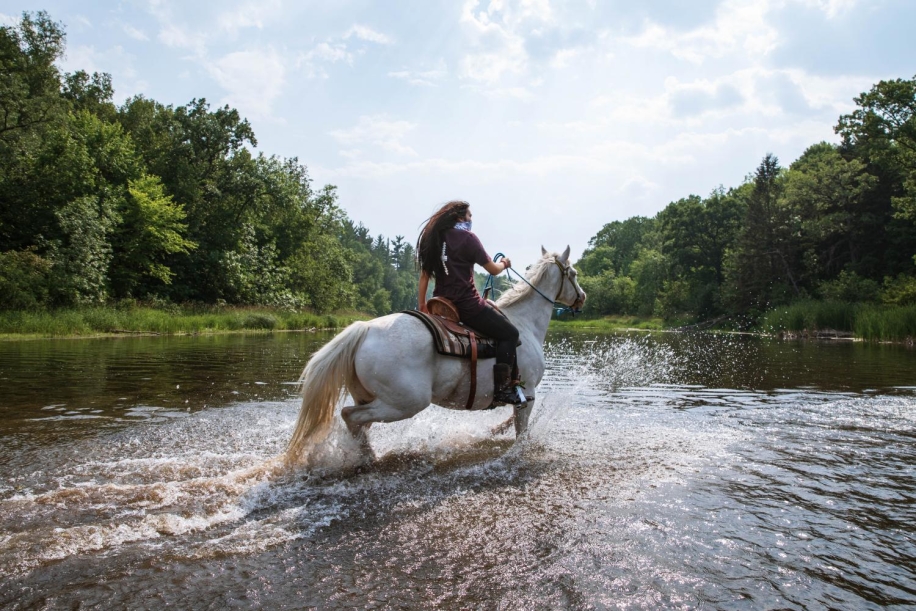

Kiley Knowles rides her horse through the Shell River in northern Minnesota during a "Women Water Protectors" demonstration against Line 3. According to a 2021 report from Indigenous Environmental Network and Oil Change International, Indigenous resistance against fossil fuel infrastructure projects over the last decade has stopped or delayed greenhouse gas pollution equivalent to at least one-quarter of annual U.S. and Canadian emissions (1.8 billion metric tons of carbon dioxide). July 15, 2021.
Black Snake Killers
Chris Trinh | Anishinaabe Territory (Minnesota), United States
Photographer: Chris Trinh
Exhibit Title: Black Snake Killers
Location: Anishinaabe Territory (Minnesota), United States
Black Snake Killers documents the Anishinaabe-led struggle against the Line 3 tar sands oil pipeline — referred to by activists as the Black Snake — during the final 3 months of Line 3’s construction. Line 3 was built by Enbridge, a Canadian pipeline giant, to carry over 800,000 barrels of crude oil daily from Alberta, Canada, to a port in Superior, Wisconsin, USA. Along the way it crosses wide swaths of Anishinaabe territory, where treaty rights grant Indigenous residents the ability to live, hunt, fish and gather.
For almost a decade, Anishinaabe land defenders have fought Line 3, which has roughly the same annual greenhouse gas emissions as 50 coal-fired power plants. They have attended public hearings, chained themselves to construction equipment to delay drilling under waterways, staged wide-scale protests and lived, sometimes for years, at resistance camps along the pipeline’s route. The Anishinaabe and many Indigenous environmental activists worldwide argue that restoring land to Indigenous stewardship — and keeping it out of the hands of fossil fuel companies — is a key means of preserving biodiversity and protecting our planet.
Chris Trinh is a Vietnamese-American photojournalist and documentary photographer. Their work primarily focuses on migration, social justice, and how climate change and colonialism impact people of the global majority. Chris’ approach to visual storytelling values informed consent and collaboration, where image-making is based on trust and interpersonal relationships. Their work has appeared in Vice, El País, Grist and elsewhere.
2021 Report: Indigenous Resistance Against Carbon
Pipeline Legal Action Network
Watch The Line Community Monitoring Map of Line 3
Indigenous Environmental Network (IEN)
Make Comment/View Comments